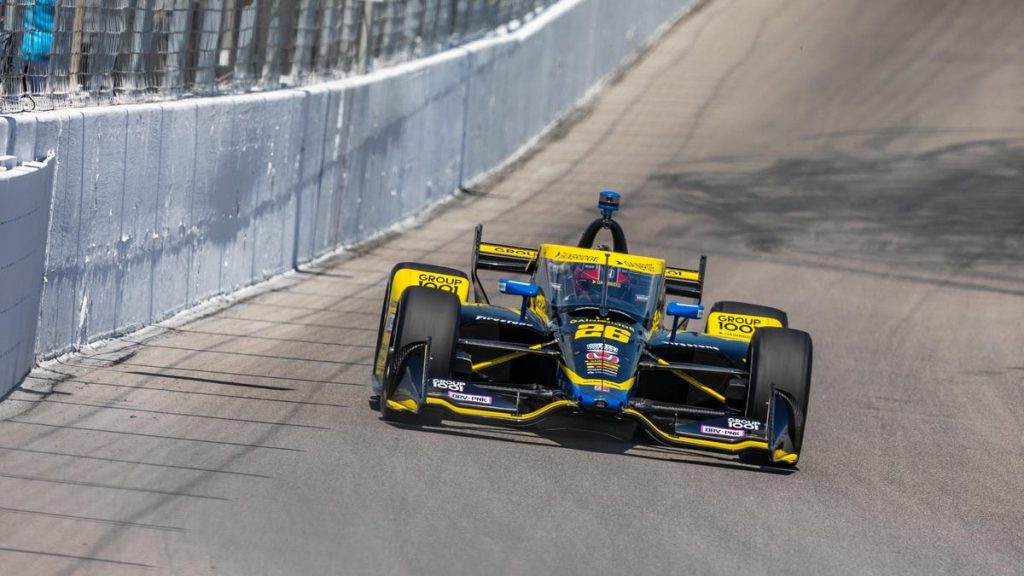IndyCar Found a Way to Stop Breaking Drivers' Wrists in Crashes

Wonder how many drivers will run against the wall next year?Photo: Sean Birkle / Penske Entertainment
The NTT IndyCar Series and chassis manufacturer Dallara are introducing new, more flexible steering arms in the front suspension for 2023. If you have watched an oval race in IndyCar, you have probably seen a car push wide on corner exit. This often leads to the outside front wheel brushing the wall. While it might seem like a near-miss, the driver pulls into pit road, parks in their box and disappointedly climbs out of the cockpit. Their day is done because a steering arm got bent from the contact with the wall.
Racer reports Dallara’s new steering arms feature thinner tubing at the connection to the suspension uprights. The arms will now flex under heavy impacts, reducing the chance of a bent steering arm. Every team will be required to run the new component in all five oval races next season, including the Indianapolis 500. Tino Belli, IndyCar’s Direction of Aerodynamic Development, told Racer:
“It has been checked for strength and is approved on all circuits, with a requirement of their use on the ovals. We don’t want to force our teams to change to them everywhere if they don’t want to, so it gives them a chance to use what they’ve got. But I think they will see the benefits once they’re used for the first time, which is normal for anything that’s new.”
IndyCar’s teams will also have the option to use the new steering arms at road course and street circuit rounds. Bent steering arms aren’t exclusively an issue on ovals, but vehicle durability isn’t the only reason to use them. Drivers tend to get thumb and wrist injuries in front-end crashes, because of the forces put through their arms when a crash causes the steering wheel to torque violently as the front wheels are impacted. Drivers are constantly reminded to let go of the wheel before a crash. The series has stated that the new steering arms send less force through the steering wheel, helping to prevent such driver injuries.
Despite the current chassis tracing its roots back a decade on track, IndyCar has consistently pushed for updates to improve both the on-track product and driver safety. The aeroscreen is the most visible safety change made with the chassis, but there have been numerous tweaks over the years. From improving cockpit anti-intrusion to adding tethering to aerodynamic bodywork, the current IndyCar chassis is significantly safer than its initial version in 2012.





